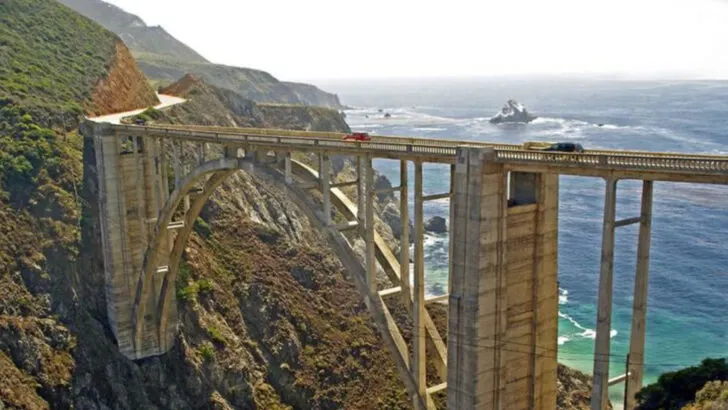The Pacific Coast Highway isn’t just a road—it’s a rite of passage. Endless ocean views, twisting cliffs, and that salty California air make it one of the most breathtaking drives on Earth. But for all its beauty, this legendary route can turn into a stress-fueled mess if you’re not prepared. Many first-timers charge in with wide eyes and no plan—missing hidden gems, underestimating distances, and getting stuck behind RVs on blind curves. It’s not just about driving—it’s about surviving the chaos, timing it right, and knowing when to stop for the kind of views that make your heart skip.
Whether you’re cruising in a convertible or steering a rental minivan, the difference between frustration and pure freedom comes down to a few smart choices. Here’s how to dodge the rookie mistakes—and the simple tips that’ll make your Pacific Coast Highway adventure unforgettable.
Mistake 1: Ignoring Weather Conditions
Travelers often overlook the impact of coastal weather. Misty mornings or sudden rain can obscure views and make roads slippery.
It’s crucial to check weather forecasts before setting off. Preparing for foggy or wet conditions ensures a safer journey.
Consider packing an emergency kit with essentials like blankets and flares, just in case.
Mistake 2: Underestimating Travel Time
The Pacific Coast Highway is not a race track. Many drivers underestimate the time needed, leading to rushed stops.
Allow extra time to savor the journey and explore unique stops along the way. Each turn offers new surprises worth lingering over.
By planning for delays, you can embrace the adventure without stress.
Mistake 3: Missing Fuel Stops
Running out of gas can turn a beautiful drive into a nightmare. The highway has long stretches with few gas stations.
Plan your refueling stops ahead, especially if you’re unfamiliar with the area. Fuel up whenever you see a station if you’re running low.
Better safe than sorry when it comes to keeping your tank full!
Mistake 4: Overlooking Rest Areas
Fatigue can easily set in during a long drive. Many drivers push through without adequate breaks.
Prioritize regular stops to stretch your legs and refresh your mind. Use scenic viewpoints as opportunities to pause and enjoy.
Rested drivers are safer drivers, ensuring a more enjoyable trip.
Mistake 5: Forgetting Snacks and Water
Hunger can sneak up on you during a long journey. Many travelers forget to pack enough snacks and water.
Bring along a variety of nutritious snacks and plenty of water. This keeps you energized and hydrated, especially in remote areas.
A well-stocked car means fewer unnecessary stops and more enjoyment.
Mistake 6: Disregarding Speed Limits
Speeding is a common mistake on this winding road. It can lead to accidents or missing beautiful views.
Obey posted speed limits to ensure safety and maximize enjoyment of the scenery. The journey is more rewarding at a slower pace.
Slowing down lets you appreciate the coastal beauty while staying safe.
Mistake 7: Not Planning Overnight Stays
Some travelers expect to drive the entire highway in one day, which is unrealistic.
Plan overnight stops to explore regions more deeply. This adds depth to your journey and breaks up long stretches of driving.
Charming coastal towns offer delightful overnight accommodations to recharge.
Tip 1: Use a GPS or Map App
Technology can be your best friend on this trip. Use a reliable GPS or map app to navigate.
These tools provide real-time updates on traffic, closures, and estimated travel times. Always have a backup map in case of connectivity issues.
Staying informed helps prevent unpleasant surprises along the route.
Tip 2: Schedule Stops at Iconic Landmarks
Plan visits to iconic landmarks along the route. Bixby Creek Bridge and Hearst Castle are must-sees.
These stops offer unique experiences and photo opportunities. Research their histories for added appreciation.
Scheduling these visits enriches your journey with memorable highlights.
Tip 3: Check Road Conditions Regularly
Road conditions can change rapidly on this coastal route. Use apps or websites to check for updates.
Be aware of closures, construction, or detours. This allows you to adjust plans proactively.
Staying informed ensures smooth travel without unexpected delays.
Tip 4: Engage with Local Culture
Immerse yourself in the local culture by visiting towns and markets along the way.
These stops offer insights into the region’s lifestyle and cuisine. Try local delicacies and chat with residents.
Engaging with locals adds richness to your travel experience.
Tip 5: Pack Layered Clothing
Coastal weather is unpredictable, ranging from sunny to chilly. Pack layered clothing for comfort.
Being prepared for temperature changes ensures you stay comfortable throughout the drive.
Layering allows easy adjustments, enhancing your experience in varied climates.
Tip 6: Plan for Wildlife Sightings
The highway offers chances to see stunning wildlife, like whales and sea otters.
Bring binoculars and plan stops at known viewing points. Research peak seasons for specific sightings.
Wildlife encounters add an unforgettable element to your coastal journey.
Tip 7: Capture Moments with Photography
Document your journey with photographs. Each stop offers unique landscapes worth capturing.
Experiment with different angles and lighting to create memorable shots that tell a story.
Photography adds a creative dimension, preserving the beauty of your adventure.

